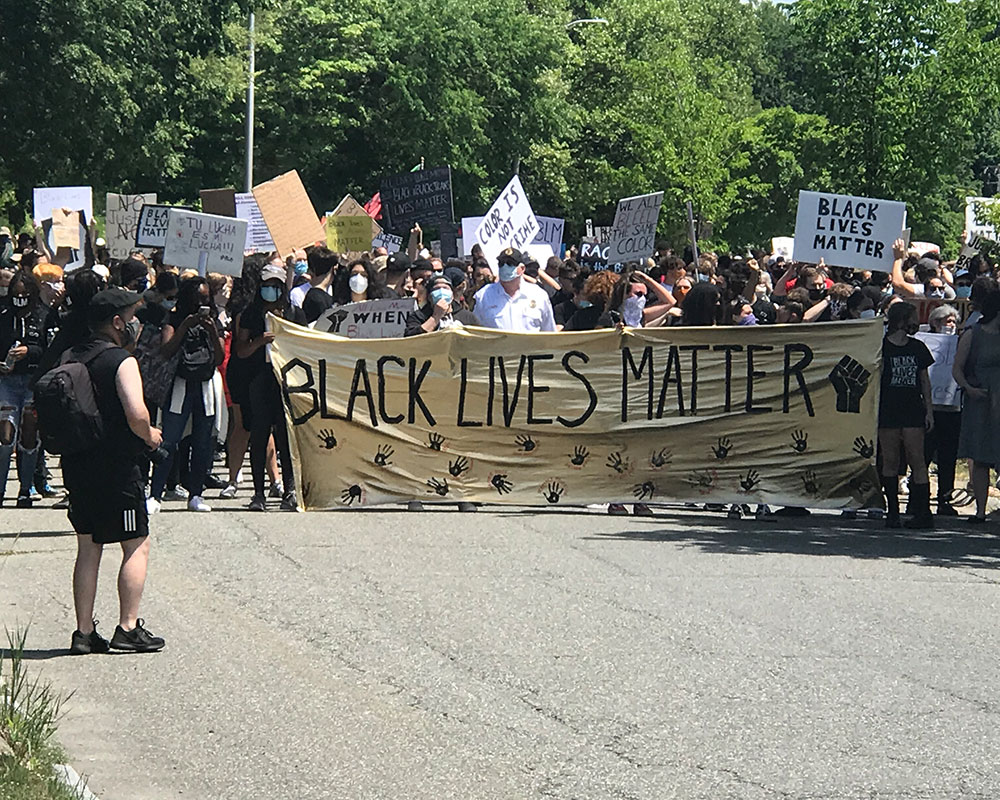Last summer, Police Chief Alan R. DeNaro marched out in front of a Haverhill Black Lives Matters protest march in the aftermath of the murder of George Floyd while in police custody in Minneapolis.
DeNaro tells WHAV his efforts to create the department’s civilian behavioral response unit, slated to launch in May, is a continuation of those steps to deescalate violence and address core issues.
“What I see and what I hear from the public in my 44 years of doing this is that we need to come up with some more nontraditional ways of dealing with the issues that are presenting themselves in 2021,” he says.
The police chief says one or two mental health clinicians will work with police officers, ride in patrol cars and assist the public with mental health needs. DeNaro lists some possible examples.
“It could be anything from children on the spectrum. It could be somebody who has mental health issues as a result of drug or alcohol use. It could be a veteran with PTSD (post-traumatic stress disorder),” DeNaro explains.
It’s a national problem, the chief explains, that has been at the root of several high-profile incidents of violence across the country as well as locally.
Illustrating the need, DeNaro notes, just since the beginning of the year, the department has received more than 300 mental health-related calls—a volume he called “alarming” and issues police officers are “not best suited to deal with.”
“This unit will be designed to know and understand about people who are potentially dangerous and work hard to get them into some type—whether it be a program or counseling or just keep tabs and well-being checks. Things of that nature so that we have a handle on this type of stuff,” he says.
The chief, Capt. Robert P. Pistone and Lt. John Barbieri visited the Orange County, Fla., Sheriff’s Behavioral Response Unit at the beginning of the month. They spent two days with the unit’s leadership and clinicians, observing the program—itself modeled after one started by the Los Angeles Police Department.
Haverhill this week began assembling the details of what will be a two- to three-week in-house clinician training program, which includes radio use; first-aid training; concealment and cover; familiarization, but not use, of firearms; potential scenarios; duck and cover; and more.
“When you go from a civilian clinician to law enforcement-assisted clinician, it’s a whole different aspect than somebody coming, say, into your office for counseling as compared to going to a potentially hot scene where somebody is irate right at that time or out of control.”
DeNaro says he would like the city to spend $150,000 a year to have two clinicians, which would cover two-thirds of police shifts. They would not be on the city’s payroll, but rather hired from a firm such as Lahey Health.
Pistone will lead interviews over the next two weeks with 10 or 12 candidates the chief describes as “solid” and “very well experienced.”

